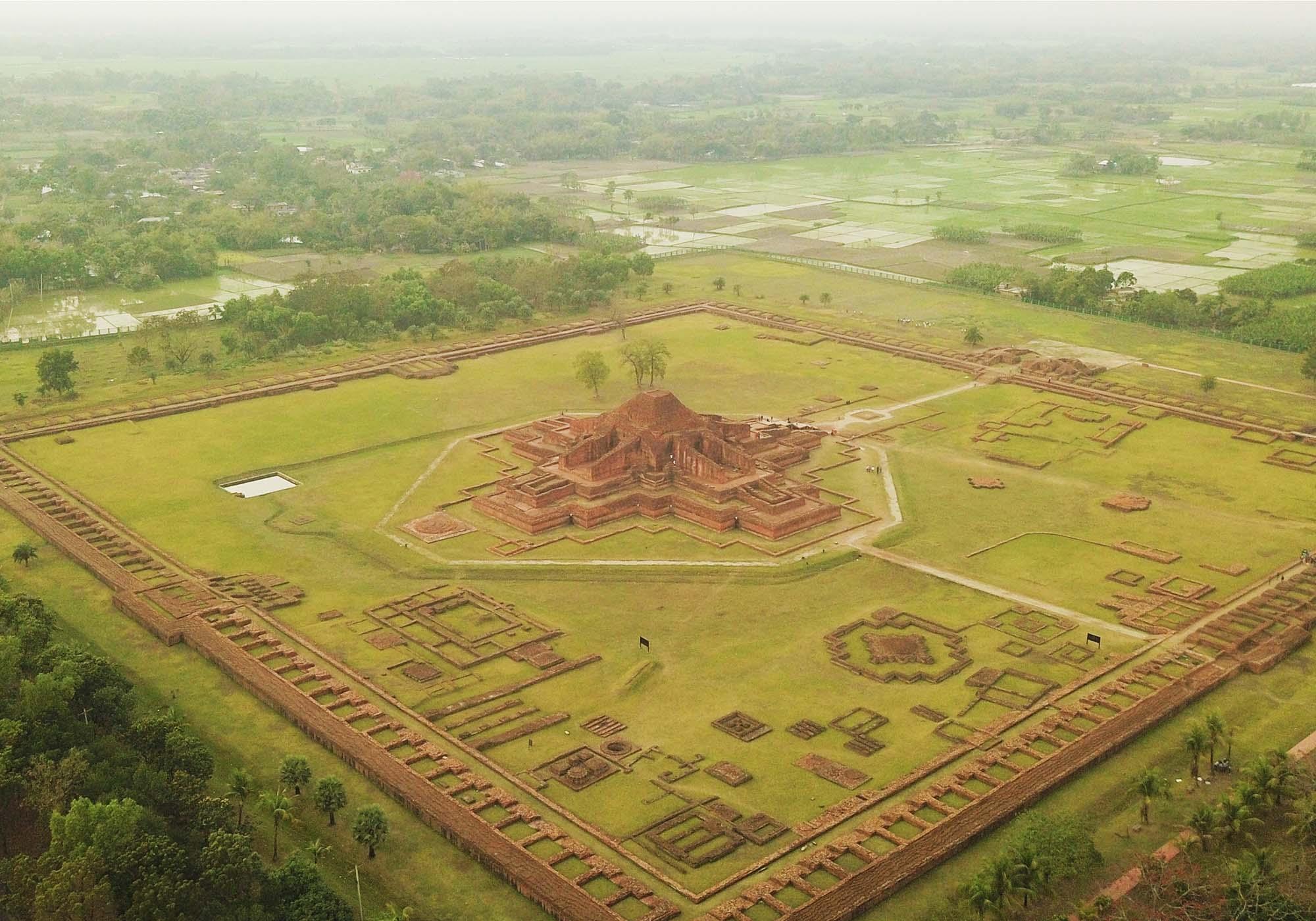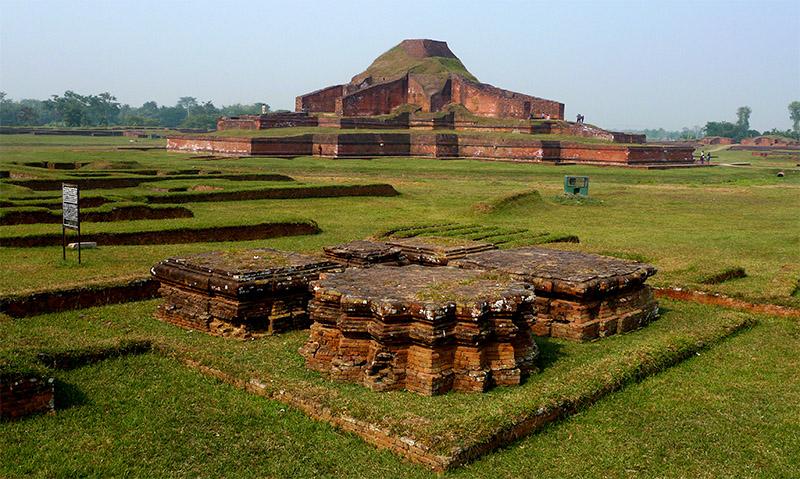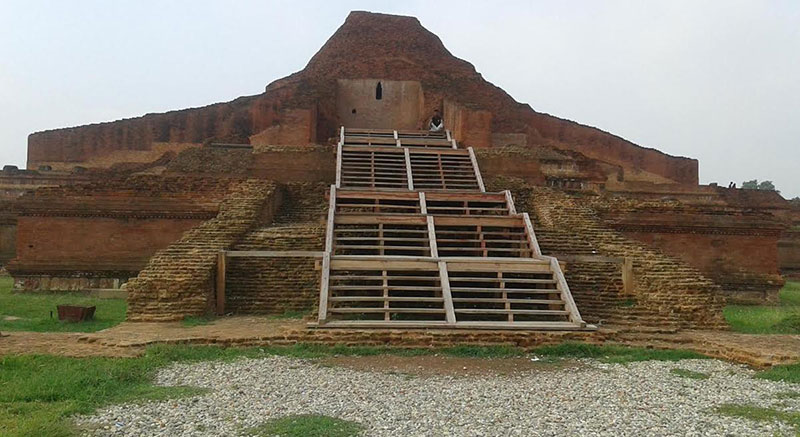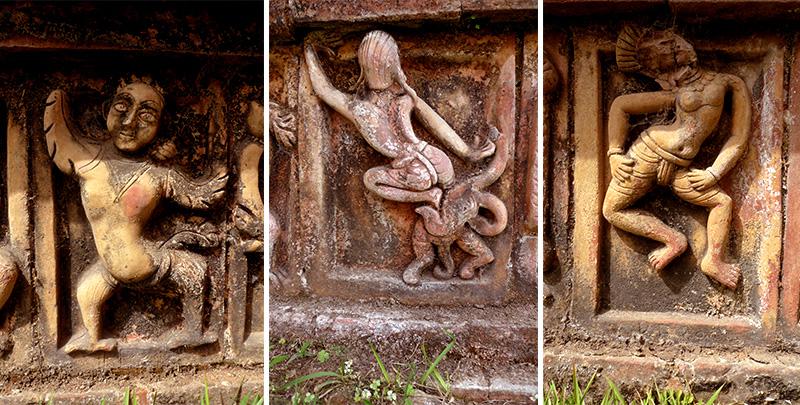There are many Buddhist Monasteries in the world, out of them mostly are situated in Asia. The countries which are famous for housing Buddhist Monasteries are India, Nepal, Japan, China. How many of you have heard of the Buddhist monastery located in the south of the Himalayas in Bangladesh? Yes, you have heard right the Ruins of Buddhist Vihara at Paharpur is a very important heritage site of Bangladesh. They are the most important and stunning UNESCO World Heritage Site which every traveller, history buff, archaeology lover and adventure seeker too.
Let’s discover why the Ruins of the Buddhist Vihara at Paharpur are so special and why it is in the list of UNESCO World Heritage site. Before discussing the know about Paharpur.
Paharpur – Archaeological Village in Bangladesh
This is an important archaeological place in Bangladesh. It is located in the Naogaon district’s Badalgachhi Upazila in northern Bangladesh’s alluvial flat plain. These archaeological ruins of a lofty old monastery were covered in jungle and were popularly known as Pahar or hill, stood in the sharp level of the plain, giving the palace its name of Paharpur.

Earlier the village and the UNESCO Heritage site was excavated in the region of India you will get to know the story in history later. But now it is in Bangladesh and famous as the most remarkable and magnificent destination where many travellers visit. Paharpur became one of the leading historical and cultural centres for many in the past eras and saw the establishment of a new Buddhism.
Also Read: Visit The Historic City of Salzburg- An Ardent UNESCO Site Of Austria
Know About The Buddhist Vihara at Paharpur
Somapura Mahavira or the Ruins of Buddhist Vihara at Paharpur is the 8th-century Buddhist monastery located in the village of Paharpur near Rajshahi, Bangladesh. It is one of the world’s largest Buddhist monasteries situated in the south of the Himalayas as it is stretched in almost 27 acres.

From the 12th century on, after numerous attacks by invaders, the monks left and the monastery buildings suffered decline and disintegration. The monastery of Paharpur is unique in itself. It was a significant site in the 17th century, occupied intermittently by Buddhists, Jains and Hindus. The outside walls of the Buddhist Vihara have artwork that contains clues to its various inhabitants.
Tale of Buddhist Vihara at Paharpur
It was built by King Dharma Pala Deva, the main Pala Kings, around the end of the 8th century. The rebirth of faith in the region started from his sponsorship of Buddhism in Bengal. Between 1807 and 1812, Buchanon Hamilton was surveying in Eastern India and came across the site. In 1879, Sir Alexander Cunningham paid a visit to the location. Cunningham planned to excavate the hill thoroughly. However, the zamindar of Balihar stopped him. As a result a tiny portion of the monastery and the top of the central mound being excavated. He uncovered the ruins of a square tower with a rise in the middle of each side in the latter region.

The Archaeological Survey of India certified the site and was declared protected in 1919 under the Ancient Monuments Preservation Act of 1904. It was designated as a UNESCO World Heritage Site as a homage to the Pala dynasty, which controlled Bengal and Bihar from the third to the eighth centuries.
Architectural Brief of the Buddhist Vihara at Paharpur
Every side of the monastery is somewhere around 900 feet in length, consisting of chambers of the monks, with more than 177 monastic cells and 92 altars of devotion in its design. Inside the walls, there is a courtyard with ruins of a medieval Buddhist stupa. The shrine stands in the middle of the enormous open garden of the monastery. The walls were built of bricks with flowery patterns.

There are other holy artefacts and shrines found all around, including the structure of Jain Chaturmukhar, showing how the monastery’s three major residential groups are influenced by their artistic and religious influences. Divine images of divine deities of Jain culture are designed on the main walls and their base walls are done with terra-cotta artworks and sacred Buddhist – Hindu sculptures.
Things You Can Do At Heritage Site
When you will reach the Buddhist Vihara of Paharpur you can first watch the architectural splendour of this enormous site. Take photos of this UNESCO affiliated historic landmark for photo collection and memory. Picnic might be not allowed at this heritage site to maintain the dignity of the site. Pay a visit to Paharpur Buddhists Vihara Museum and learn about the ruins in detail.
Protection & Maintenance
In 1985, the Buddhist Vihara of Paharpur was listed as a UNESCO World Heritage Site. Since then, a series of UNESCO delegations have visited the site on a regular basis to assist with the restoration.
The site’s terracotta artworks have been severely damaged as a result of the flooding, a labour deficit, a financial limitation and heavy rainfall. Furthermore, the terracotta statutes have worsened due to inadequate water drainage and excessive levels of saline in the soils. Uncontrolled vegetation, destruction, climate change, public visit and attack are among the other hazards faced by the site
Parharpur’s richness and remoteness as well as the surrounding attractions and experiences warrant at least two or three days. The Somapura Mahavira, its museum and the adjacent heritage site Satyapir er Bhita should all be registered for at least one full day.
Also Read: Discover the Lost Mosque City of Bagerhat in Bangladesh

